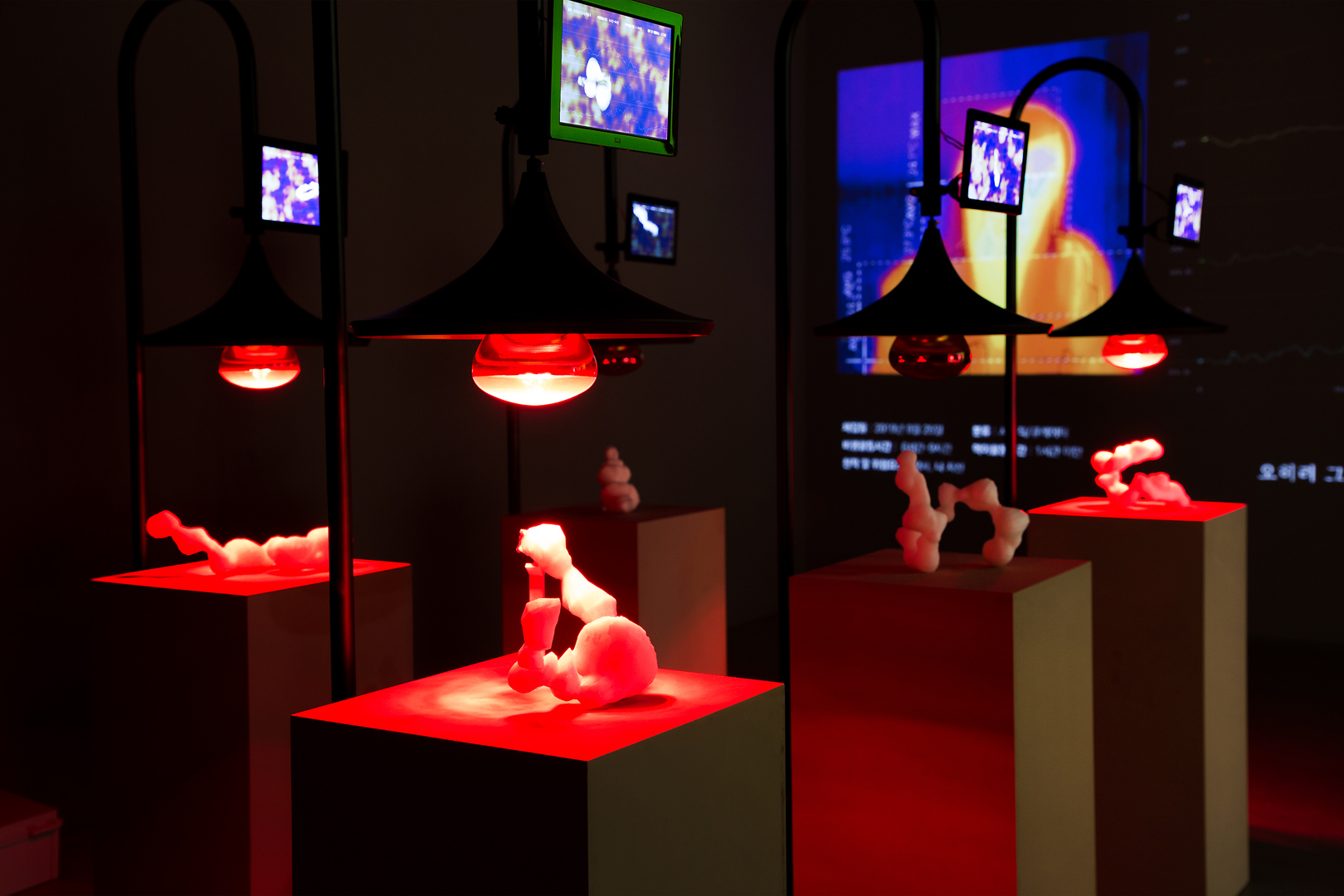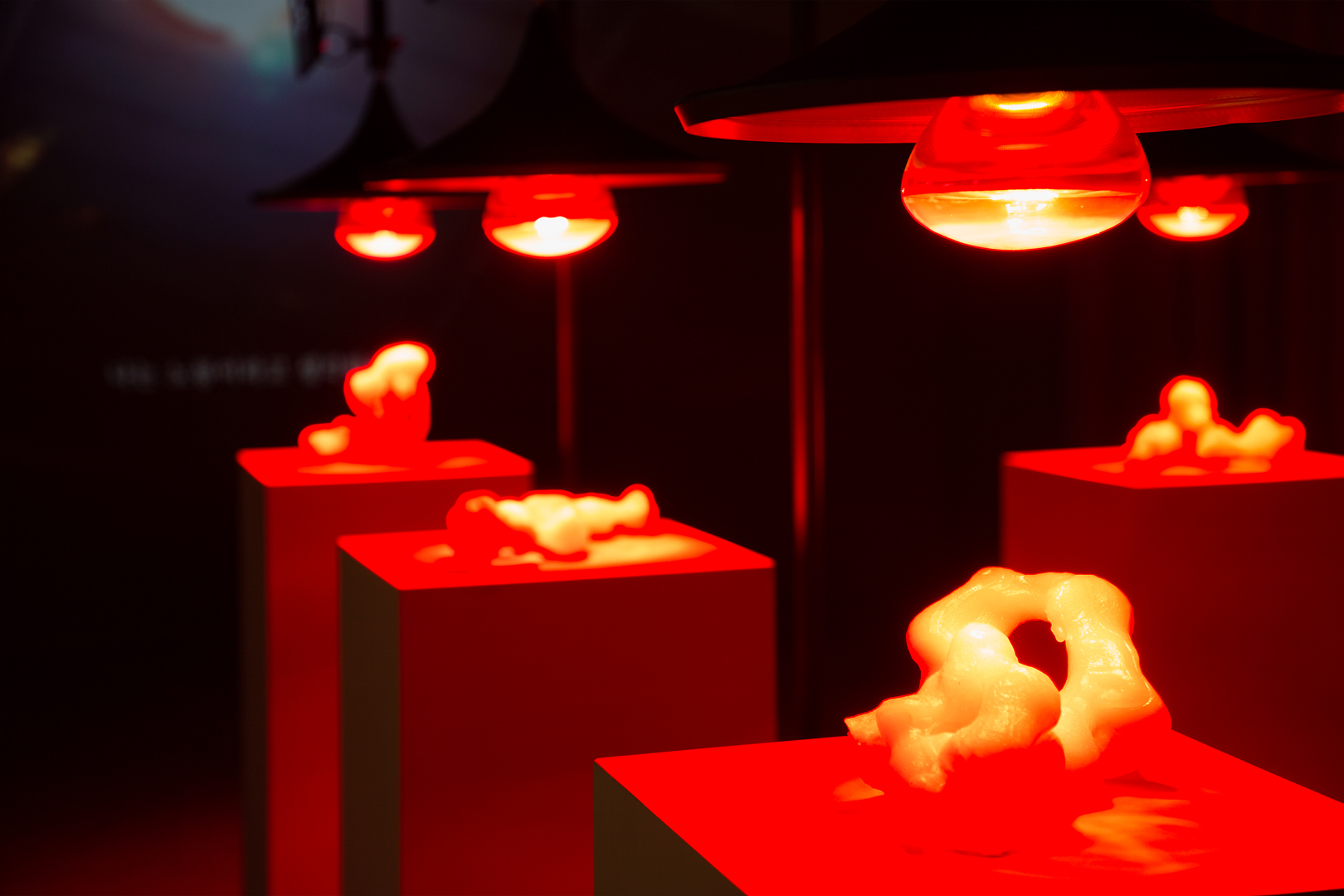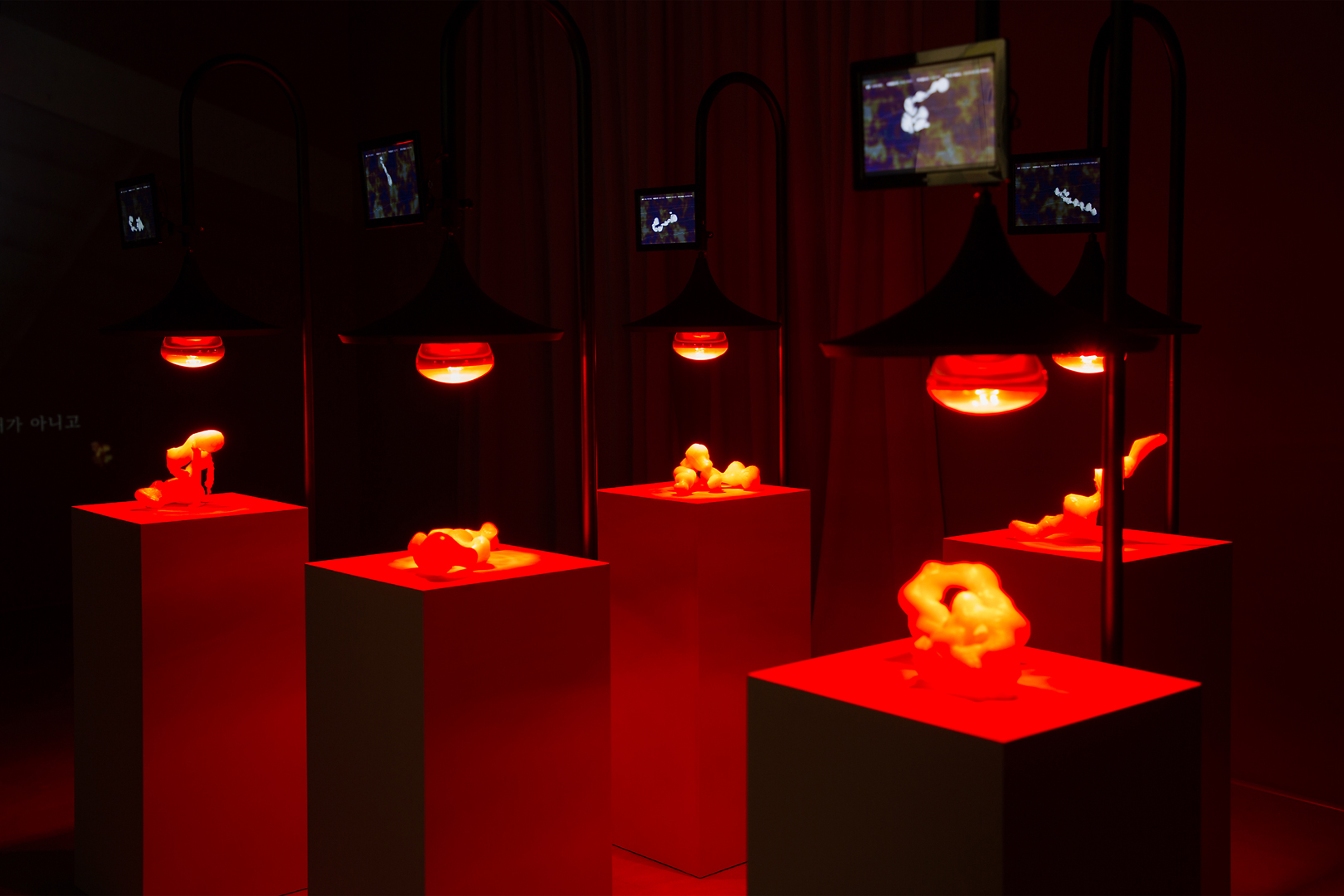Soyoung You: Trace Of Dance
Artist(s):
Title:
- Trace Of Dance
Exhibition:
Category:
Artist Statement:
Summary
Quantitative/qualitative data were collected through interviews with laborers. and temperature data of workers changed as sculptures according to specific algorithms. The manufactured sculpture is gradually melted by thermal lighting proportional to the working hours of the laborers.
Abstract
Trace of Dance tells the story of modern labor. It is not just to make money, but it includes images of various complex desires, such as social status, personal satisfaction, and the recognition of bosses. The artist likened this image of a modern laborers to an inertial wing of a moth.The thermal data are collected through interviews with workers and produced as sculptures depicting the trace of dance based on them. The sculpture is melted by thermal lighting, which turns on and off in proportion to laborers’ working hours. The artist asks whether this quiet misfortune comes from personal aspirations or from systems.
Trace of Dance goes through the process of replacing the worker’s thermal data with a physical sculpture through a series of algorithms. In this process, certain rules in the program are applied to produce sculptures. However, sculptures with heat-melting properties do not melt according to algorithms. They are either laws that we cannot read or are melted by laws that change so easily. Some algorithms are easily changed by conditions and the environment, and at this point this work shows the process of the algorithm collapsing.
Technical Information:
The space should be generally dark and the temperature of the space may rise slightly due to the thermal lighting of the work itself. The work is repeated on an hourly basis and the on/blink/off of the thermal light is repeated during that time.
This work is labor’s heat and proportional to the working hours to focus on data becomes sculpture will melt.
As time goes by, it shows the changing process of the work, which depends on the data. Changes in the work are expected depending on the data, but are not actually fully applied. This means that workers’ lethargy involves not only working hours but also various factors.
Other Information:
Inspiration Behind the Project
In the middle of summer, I had an experience of sweating while working on hot sand. Then I came to think about the relationship between sweat and labor and heat. If we put the thermodynamics perspective into labor, we thought that labor was the exchange of the workers’ heat energy and enthusiasm for economic rewards. So I collected the thermal data of the workers and created a wax sculpture that changed shape depending on the heat energy.







